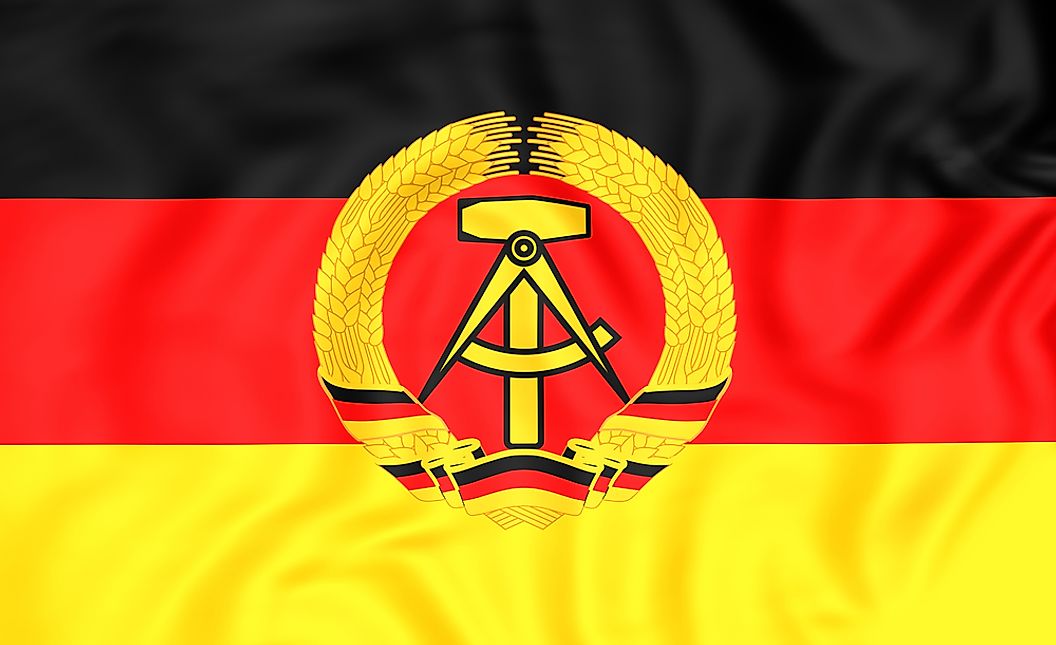History is a dangerous and fickle place. Small, harmless nations have risen to immense power, commanding military and diplomatic influence over all their neighbors. Empires that once spanned the known world, and the entire globe, once mighty and seemingly invincible, have been reduced to tiny shadows of their former selves. And many nations have disappeared altogether, some being remembered for their significant effect on human civilization, and some are barely a footnote in history books.

Why do countries cease to exist?
There are several possible reasons for a nation to come to an end. Some countries merge to form (or reform, in the case of East Germany and West Germany) a single country. Other countries split apart—for example, the Union of Soviet Socialist Republics (U.S.S.R.), dissolved into 15 smaller countries in the late 1980s and early 1990s. Some countries have been annexed, such as when the growing United States of America absorbed the fledgeling Republic of Texas in 1845. Others have been conquered outright and assimilated, as happened when Vietnam absorbed the kingdom of Champa. Finally (and least catastrophically), some nations have remained intact and simply adopted a new name, such as when Ceylon “died” and was reborn as Sri Lanka in 1972.
Countries that no longer exist
1. Austria-Hungary (1867-1918)

The Austrian Empire was a significant player in the European scene, lasting from 1867 to 1918. While relatively short in existence, it evolved into the Austro-Hungarian Empire and played an essential role in the outbreak of a world war. As the story goes, the assassination of Franz Ferdinand, the heir to the Austro-Hungarian throne, by a Bosnian Serb national triggered the outbreak of World War I.
As the empire ended on the losing side of the battle, it was split up at the end of the war into the European countries we know today as Austria and Hungary. However, the empire also included parts of the Czech Republic, Poland, northern Italy, Romania and the Balkans.
2. Southern Song Empire (1127 – 1279 AD)
If the Southern Song Empire is known at all, it is primarily as being the last major Chinese polity to resist the Mongol conquest of the region. Prior to fighting the Mongol hordes and their Yuan dynasty, the Southern Song dynasty lorded over most of China proper and was considered to be, simply, the Song Empire. A vicious war with the usurping Jin dynasty pushed the Song south of the Huai River, and the Song became the Southern Song. The Jin dynasty was ruled by Manchurians, an ethnic group very different from the Han who controlled the Song dynasty, and as a result the Southern Song continued to exert enormous soft power on its militarily stronger rivals to the north since much of China is peopled by the Han.
When the Mongols invaded China, the Southern Song Empire was quick to ally itself with the Mongols and crush the Jin dynasty. Once the Mongol-Song alliance destroyed the Manchurians, though, the former allies turned against one another. The Southern Song seized several cities that lay to the north of the Huai River, and continued to exert its cultural soft power on yet another non-Han dynasty claiming to rule China (the Mongol-created Yuan dynasty). It took the Mongols 20 years to conquer the Southern Song Empire.
3. Tlaxcala Republic (1348-1821)

Like many medieval republics throughout the world, Tlaxcala was oligarchic rather than democratic. When the Spaniards arrived in the early 16th century, the Tlaxcaltec fought them in a few brief, bloody skirmishes before both sides realized they’d make better friends than enemies.
An alliance between the Spanish monarchy and the Tlaxcalan republic was formed, and together they conquered the Aztec Triple Alliance. This alliance came with benefits for Tlaxcaltecs other than simply defeating their hated enemy. The republic was incorporated into New Spain but it was relatively autonomous and its oligarchy remained intact for several centuries after the Conquest. Tlaxcalans had gun and land rights throughout New Spain, too. Tlaxcaltecs fought side-by-side with Spaniards against Mayas in southern Mexico and Guatemala, and against Comanches to the north in what is now Texas and New Mexico. With every new conquest of territory for Spain, high-ranking Tlaxcaltec soldiers were granted latifundias rivaling those given to Spanish conquistadors.
Tlaxcala lost complete autonomy after the Mexican War of Independence in 1821. The autonomous republic was incorporated into Mexico first as a territory and finally, in 1856, as a state in the Mexican federal union. Tlaxcala’s legacy as an independent, indigenous republic has been vulgarly shoved into the dustbin of history by left-leaning nationalist historians hellbent on centering Mexico’s history around the Aztec Triple Alliance.
4. Czechoslovakia

Founded in 1918 at the end of World War I, Czechoslovakia, a former Central European nation, comprised the former lands of Bohemia, Moravia, and Slovakia. The political union was possible because these regions had similar languages, religion, and culture. Between the world wars, the country became one of Central Europe’s most politically stable and prosperous states, functioning as a parliamentary democracy. From 1938-1945, Czechoslovakia was under Nazi rule, and from 1948-1989, it was controlled by the Soviet Union. A peaceful “Velvet Revolution” brought communism to an end in Czechoslovakia in 1989. By 1990, the country had held its first free elections, but disagreements between Czechs and Slovaks grew. The parliament peacefully dissolved the sovereign state in 1992, agreeing to separate the country into the Czech Republic and Slovakia starting in 1993.
5. The Former Nation of Gran Colombia

For 12 years, from 1819 to 1831, Gran Colombia existed as an independent state that encompassed large parts of northern South America and parts of Central America. Its total claimed territory was 2,417,270 km2 or 933,310 square miles, making it almost three times the size of modern-day Texas.
From its inception in 1819 to 1830, Gran Colombia was run by President Simón Bolívar, who remains a famous military and political figure with a legacy of independence movements throughout South America. The country was widely regarded as the most powerful nation in South America and served as an inspiration for other independence movements in territories that not only wanted to break from their colonial masters but also wanted to join Gran Colombia.
Bolivar’s dream for Gran Colombia would not live long. The government was heavily centralized, and constituent regions felt they were underrepresented. Venezuela demanded more federalization, which led to violent conflict with the government. To add to this, the country fought a territorial war with Peru from 1828 to 1829. In the end, the vision of unity was not strong enough, and Gran Colombia dissolved. Venezuela, Ecuador, and New Granada (now Colombia) were born as successor states.
6. Ottoman Empire (1299-1922)

Like other grand empires, the Ottoman Empire’s end was inevitable. Like the Roman and Byzantine Empires preceding it, the Ottoman Empire ruled for centuries. It covered vast parts of the world, even crossing continents. Once stretching as far north as part of the kingdom of Hungary, Russia and the Balkans, down to the Persian Gulf with parts of the Middle East and North Africa, the Ottoman Empire ended in 1922.
While the empire’s decline didn’t happen overnight, its power gradually deteriorated. If the Ottoman Empire hadn’t sided with the losing side in WWI, its demise might have occurred later. As with other countries on this list, the war’s end meant that the Ottoman Empire was split up and eventually abolished once the Turks won their independence in 1922. A new country, Turkey, emerged, and today, it is a popular tourist destination.
7. Soviet Union (USSR) (1922-1991)

The Union of Soviet Socialist Republics lasted from 1922 to 1991, and its collapse brought us 15 new countries. The fall of the Soviet Union also marked the collapse of communist rule, ending its iron grip on Eastern and Central Europe. Enter new ideas, modernize, and open up to the world.
These new countries became Armenia, Azerbaijan, Belarus, Estonia, Georgia, Kazakhstan, Kyrgyzstan, Latvia, Lithuania, Moldovia, Russia, Tajikistan, Turkmenistan, Ukraine and Uzbekistan. As the Soviet Union ruled for decades and travel was restricted within its boundaries, most people born in that time had very little (if any) knowledge of these countries and their histories.
8. German Democratic Republic (GDR)

The German Democratic Republic (GDR), also known as East Germany, was established in 1949 during the Cold War period from the area of Germany that the Soviet Union occupied. The Soviet Union area zone encompassed West Berlin however it remained out of GDR’s jurisdiction. The German Democratic Republic became the Soviet Union’s satellite state. By 1948 the Soviet Union’s authorities in the country began to transfer governing responsibilities to the German communist leaders and on October 7th in the year that followed GDR started functioning as a state. The country’s capital was based in East Berlin since West of Berlin remained as part of the Federal Republic of Germany. Up until 1989, the country was ruled by the Socialist Unity Party.
The country’s downfall was attributed to factors such as the emigration of well-educated youths, open elections initiative, and the establishment of numerous political and social forces among others. Following years of conflict with the Federal Republic of Germany and the collapse of communism, the two republics were united after the Berlin wall was brought down and culminated in the unification to form Germany and therefore GDR ceased to exist in 1990.
9. Bengal
:quality(80)/granite-web-prod/04/9b/049bc709fa8f4ff9998a4c211c6c1832.jpeg)
The name Bengal usually makes us think of either tigers or cats, but it was once an independent kingdom in Asia. It was around from 1338 to 1539, functioning as a leading regional empire with massive trade networks.
Bengals were known for traveling the seas with their sizable military forces, and Europeans considered them to be wonderfully wealthy trade partners. Though the climate was painfully hot, the Bengal kingdom produced an abundance of silk, cotton and building materials. Their living standard during the 16th and 17th century was among the highest in the world.
After the area was taken over by the British East India Company in 1757, it became the Bengal Presidency of the British Raj. The British proceeded to tax Bengal so heavily that multiple famines ensued from the 1770s through the 1940s. The area was later divided up into two separate countries: Bangladesh and India.
10. Bora Bora
:quality(80)/granite-web-prod/3c/0d/3c0d299cbc38414ab57d399bb5fdde5e.png)
The Kingdom of Bora Bora, an independent Polynesian state, started during the early 1800s. It was first recognized officially in 1847 during the Jarnac Convention.
It was in the same general department as other islands in the area, including Tahiti, Huahine and Raiatea. All the islands were culturally tied, sharing similar languages and rulers bound by marriage.
The Kingdom of Bora Bora didn’t just include the island of Bora Bora, but also the islands of Tupai, Maupihaa, Maupiti, Manuae and Motu One. Bora Bora was annexed to France in 1888, with its final queen, Teriimaevarua III, forced to step down in 1895.














Leave a comment